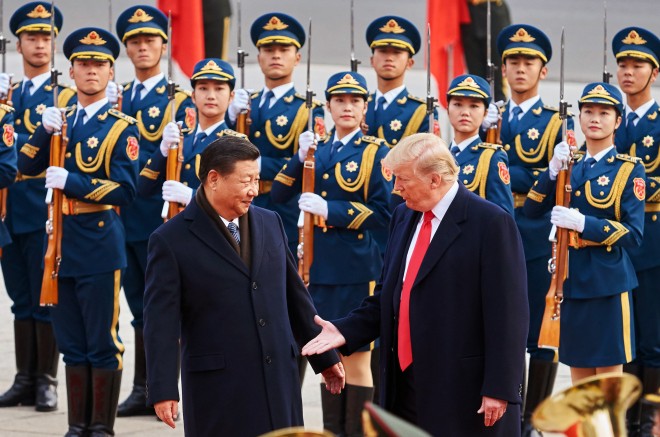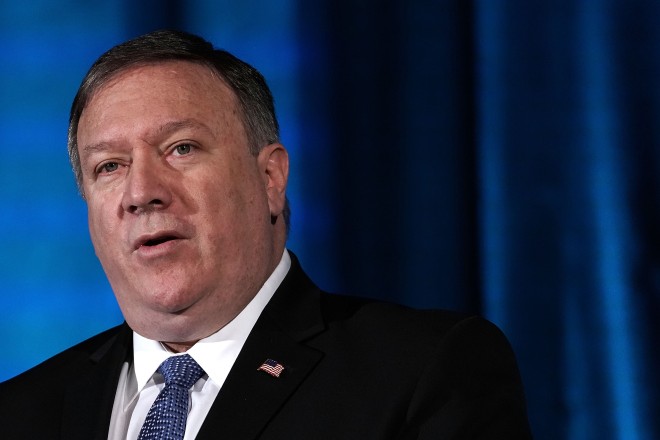
Friends, foes and firepower: Donald Trump’s vision for US-Asia ties is still anyone’s guess
From his bipolar relations with China and North Korea to ramped-up military exercises in disputed waters to his no-show at this year’s Asean summit, the American president has been sending mixed political signals about his intentions towards the region.
[Brought to you by SCMP Events and Conferences]
Michael Crowley, Senior Foreign Affairs Correspondent, POLITICO
More than 18 months into Donald Trump’s presidency, his vision for US-Asia relations remains a mystery. Trump has befriended China’s president while slapping harsh tariffs on his country; he has threatened and backslapped North Korean leader Kim Jong-un; approved more military spending and complained that the US should spend less money “policing the world”, including in the Asia-Pacific.
Senior officials who report to Trump offer a more consistent view: that the US is in a strategic competition with China, which requires a strong American presence in Asia – and especially across Asean nations.

Most recently, in July, Secretary of State Mike Pompeo announced the US will contribute US$113 million to a new infrastructure development fund also backed by Japan and Australia. To many observers, that was a paltry sum. But it was also interpreted as a State Department signal of continued US determination to counter China’s growing economic influence in the region.
“The United States is a Pacific nation, and we remain committed to Asean centrality under our Indo-Pacific strategy,” Pompeo said at an Asean ministerial in Singapore days later.
If more than US$100 million is relatively easy to dismiss when compared to the multibillion dollar spending of China’s “Belt and Road Initiative”, the US military is harder to shrug off. In June, Defence Secretary James Mattis asserted America’s view that China must end its policy of “intimidation and coercion” of nations in the South China Sea. Days earlier, two US warships had sailed within 12 miles of disputed islands in the South China Sea – a signal to Beijing that Washington intends to contest its territorial claims there.

More recently, the US was one of 11 nations to participate in Southeast Asia Training and Cooperation exercise in August, which are implicitly designed, in part, to counter what the participating nations consider Chinese territorial aggression. And in late August, a US carrier strike group conducted what the US Navy called a joint “patrol” in the South China Sea with a Japanese helicopter carrier.
But the Trump White House continues to send confusing political signals to the wider world. After attending last year’s Asean summit, Trump announced in September he will pass on this year’s gathering, to be held in Singapore November 11 to 15. Instead, he is sending Vice-President Mike Pence. Trump officials say Pence will speak and listen for Trump. But the presidential no-show has been interpreted by many analysts and regional officials as a snub – and a sign that Trump is not personally invested in a US commitment to Southeast Asian stability and security.
“Symbolism matters. The Chinese have made gains when his predecessors have not attended” the Asean event, author and commentator Gordon Chang tweeted after the US announcement.
The latest book by the legendary Washington journalist Bob Woodward has only raised more questions about Trump’s view of the region. Woodward reports that, in a meeting with his top national security officials, he questioned why the US maintains a large and expensive presence in Asia at all.
For now, then, the world will have to keep guessing at Trump’s long-term intentions for Southeast Asia specifically and Asia generally. Top officials like Mattis and Pompeo seem determined to maintain strong relations with Asean nations and invest US dollars and military might. But Trump has the power to undercut those efforts at any time. As with so many aspects of American foreign policy, what comes next is impossible to predict.
